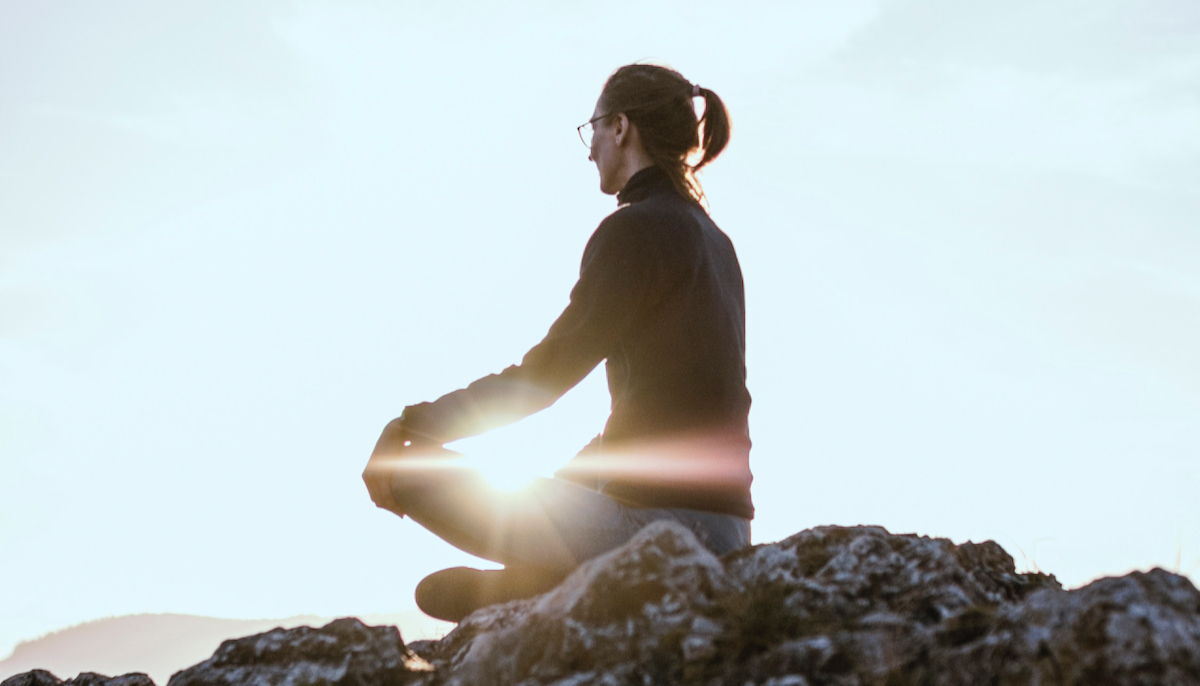Meditation practice awakens our trust that the wisdom and compassion that we need are already within us. It helps us to know ourselves: our rough parts and our smooth parts, our passion, aggression, ignorance and wisdom. The reason that people harm other people, the reason that the planet is polluted and people and animals are not doing so well, these days is that individuals don’t know or trust or love themselves enough. The technique of sitting meditation called shamatha-vipashyana (“tranquillity-insight”) is like a golden key that helps us to know ourselves.
In shamatha-vipashyana meditation, we sit upright with legs crossed and eyes open, hands resting on our thighs. Then we simply become aware of our breath as it goes out. It requires precision to be right there with that breath. On the other hand, it’s extremely relaxed and soft. Saying, “Be right there with the breath as it goes out,” is the same thing as saying, “Be fully present.” Be right here with whatever is going on. Being aware of the breath as it goes out, we may also be aware of other things going on—sounds on the street, the light on the walls. These things capture our attention slightly, but they don’t need to draw us off. We can continue to sit right here, aware of the breath going out.
But being with the breath is only part of the technique. These thoughts that run through our minds continually are the other part. We sit here talking to ourselves. The instruction is that when you realize you’ve been thinking you label it “thinking.” When your mind wanders off, you say to yourself, “Thinking.” Whether your thoughts are violent or passionate or full of ignorance and denial; whether your thoughts are worried or fearful; whether your thoughts are spiritual thoughts, pleasing thoughts of how well you’re doing, comforting thoughts, uplifting thoughts, whatever they are—without judgment or harshness simply label it all “thinking,” and do that with honesty and gentleness.
The touch on the breath is light: only about 25 percent of the awareness is on the breath. You’re not grasping and fixating on it. You’re opening, letting the breath mix with the space of the room, letting your breath just go out into space. Then there’s something like a pause, a gap until the next breath goes out again. While you’re breathing in, there could be some sense of just opening and waiting. It is like pushing the doorbell and waiting for someone to answer. Then you push the doorbell again and wait for someone to answer. Then probably your mind wanders off and you realize you’re thinking again—at this point use the labeling technique.
It’s important to be faithful to the technique. If you find that your labeling has a harsh, negative tone to it, as if you were saying, “Dammit!,” that you’re giving yourself a hard time, say it again and lighten up. It’s not like trying to shoot down the thoughts as if they were clay pigeons. Instead, be gentle. Use the labeling part of the technique as an opportunity to develop softness and compassion for yourself. Anything that comes up is okay in the arena of meditation. The point is, you can see it honestly and make friends with it.
Although it is embarrassing and painful, it is very healing to stop hiding from yourself. It is healing to know all the ways that you’re sneaky, all the ways that you hide out, all the ways that you shut down, deny, close off, criticize people, all your weird little ways. You can know all of that with some sense of humor and kindness. By knowing yourself, you’re coming to know humanness altogether. We are all up against these things. So when you realize that you’re talking to yourself, label it “thinking” and notice your tone of voice. Let it be compassionate and gentle and humorous. Then you’ll be changing old stuck patterns that are shared by the whole human race. Compassion for others begins with kindness to ourselves.
From Start Where You Are: A Guide to Compassionate Living, by Pema Chödrön. With permission of Shambhala Publications.

